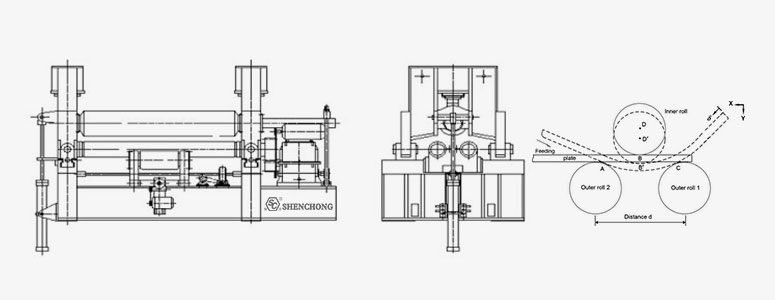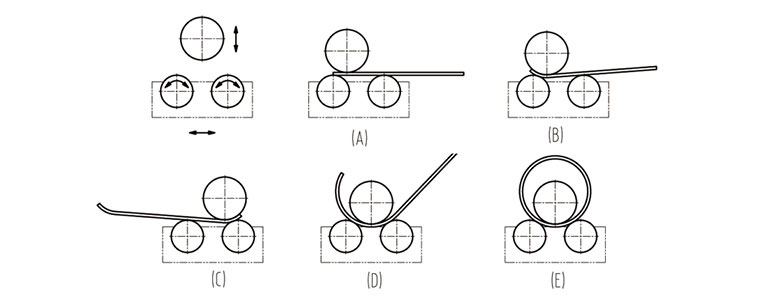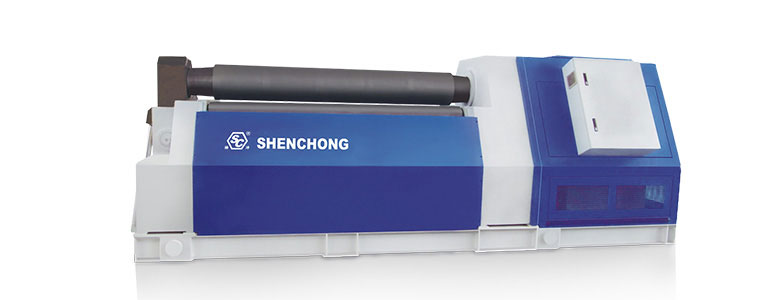
In the manufacturing and metal industry, many tools and advancements have been created to make the job that much more efficient. One of those advancements includes the plate rolling machine.
You may be asking, ‘What is a plate rolling machine?’ or ‘What is it used for?’ You will learn all about the plate rolling machine definition and its working principle in this article.
Plate rolling is a crucial part of any metal-working job and is essential to ensuring that the job is done correctly. From rolling metal sheets into pipes or creating buckets and more, the plate rolling machine is a valuable and technologically advanced tool used by many manufacturers and workers.
While there are many different types of metal plate rollers that result in different sizes of metal cylinders, they all have their uses and qualities that make it an irreplaceable machine, especially in the metalworking industry.
Now, let’s take a look at what a plate rolling machine is and what it can do.

Let us first start with a plate rolling machine definition. While the plate rolling machine may look intimidating, the usage is really quite simple.
Definition:
A plate rolling machine is a machine that is used to roll metal into a cylindrical shape using hydraulics or mechanics. This can include anything from pipes, buckets, pressure vessels, and more.
While most plate rolling machines are used to roll flat metal pieces into a cylindrical shape, there are some that can also do the opposite, though they aren’t used as often. You may hear plate rolling also referred to as roll bending or plate bending, though they all mean the same thing.
Plate rolling machines are most often seen in industries such as gas and oil, home, automobile, appliances, and more. Along with it being used in many different industries for various purposes, there are also a variety of types.
These different types of machines include two roll machines, three roll initial, three roll double pinch, three roll variable translating geometry, four roll double pinch, vertical rolls, and automated cycle and specialty rolls.
Each different type of plate rolling machine has a different purpose depending on what you are using it for. While some are used for bigger cylinders and less arc, some of used for tighter cylinders with a high arc.
You may also be interested in: What Should You Consider When Selecting a Steel Plate Roller?

A plate rolling machine works by using hydraulic or mechanical power along with three to four hardened metal rollers.
Normally, there is four rollers total, two of which are adjustable for size and cylinder shape. Three of the four rollers are found on the bottom with a bigger roller that goes on top. The two outer rollers are adjustable in order to change the shape and size of the roll that you are creating.
One of the most common types of metal plate rollers is the standard four roller because it can produce the biggest variety of metal cylinders.
While there are many different types of plate rolling machines that will all change the usage slightly, this is how you can use a standard four-roll type.
Plate rolling machine working principle and operation:
To use the machine, you first raise the lower roll to the punch plate, meaning that it is now above the other two rollers. Then, you slide the metal sheet into place between the rollers, stopping when it is square against the pinch plate that you raised.
Once it is firmly in place, you can lower the initial roller back down and bring the third and potentially fourth roller into the correct position to roll the metal while moving the metal to the center of the punch plate. You then raise the side roll that the metal is on the create the ‘pre-bend’, or the initial bend, in the metal.
Roll the metal through the machine until it is on the other side of the upper roller, lower the pre-bend roller, and raise the opposite bending roller until it is in position to roll.
From there, the machine pulls the metal through the rollers, creating an arc or cylindrical shape by pinching the metal between them. The two edges are then welded together to complete the cylindrical shape and merge the two edges.
While there are many different types of plate rolling machines that are slightly different in the shape or size of the cylinder that they make, they all follow generally the same steps and procedures and will all result in the round, cylinder shape. The only difference between the machines would be the size of the cylinder it creates.

To break it down more, here are some simplified steps you can follow If you are using a four-roller bending machine:
- Raise the lower roll to the punch plate
- Place the metal sheet until it is square against the lower roll
- Lower the roll and pull the metal sheet until it is centered with the punch plate
- Create the pre-bend by raising the first roller or pre-bend roller and pull the metal through
- Lower the pre-bend roller and raise the opposite roller the create an arc in the metal
- Pull the metal all the way through until it creates a complete cylinder
- Weld the two edges together
While these steps may vary if you are using a two roller or three roller, this is the general idea and usage of a plate rolling machine and how it works.
Overall, the plate rolling machine working principle is immensely valuable in many industries or the manufacturing field of work. Because it is used to create cylindrical shapes such as pipes, buckets, and more, it can be used in any industry from military to homes and beyond. Its usage is extremely valuable and is used across the manufacturing workforce.
From pipes to housing appliances and more, the technologically advanced plate rolling machine is irreplaceable in the metalworking industry. Because of its many uses and possibilities, it is not going away anytime soon.
Click here to know: How To Bend Cone Workpiece With Plate Rolling Machine